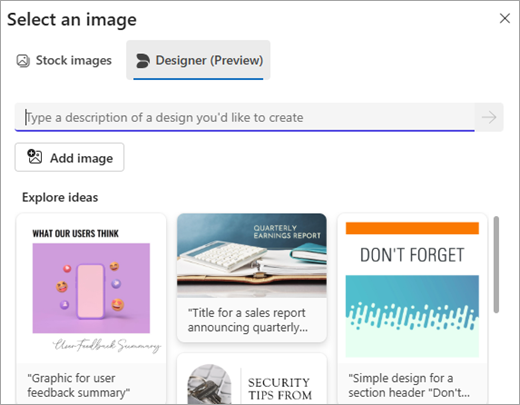Protecting Students from AI Image Exploitation: Government Policy Changes
As AI-generated imagery becomes more sophisticated, schools face new challenges in safeguarding students from digital exploitation. This practical guide outlines essential steps for protecting students from AI image abuse, including policy updates, detection tools, and preventive measures that ev...

Understanding the Growing Threat of AI-Generated Images
Recent data from the Home Office indicates a concerning development: since 2023, there has been a documented rise in AI-generated manipulated images affecting school-aged children. Research suggests that malicious actors are increasingly targeting educational institutions' online presence in more sophisticated ways.
Analysis shows that these individuals are utilising images from official school websites, social media channels, and school event photographs to create synthetic media. Current technological developments have made it increasingly difficult to identify manipulated content from authentic materials, presenting challenges for safeguarding professionals. Studies on AI and student safety indicate that educational institutions' digital platforms have become frequent sources for image collection.
In response to these challenges, the UK government has introduced legislation that specifically addresses AI-generated harmful content. The updated legal framework recognises the distinct nature of synthetic media abuse and aims to provide educational institutions with clearer guidance for protecting students. These measures supplement existing safeguarding protocols and may help institutions respond more effectively to emerging digital threats.
Evidence from educational settings demonstrates the rapid evolution of these digital risks. School photographs and media content that appear benign can become sources of concern when manipulated, potentially affecting student wellbeing and family privacy. These developments are prompting educational institutions to reassess their approach to digital content management, including their policies on publishing photographs, event coverage and social media activity.
Practical Steps for Image Management in Schools
Contemporary approaches to protecting student images require significant adaptation. Historical protective measures, such as watermarking and download restrictions, have become inadequate in addressing current technological capabilities. Educational institutions now need to develop more sophisticated and comprehensive image management strategies that account for emerging AI-based challenges.
To address these evolving challenges, educational institutions should consider the following guidelines for image management:
- Consider using group photographs rather than individual portraits, as composite images typically present greater technical barriers to manipulation
- For secondary school students, implement broader photographic framing that emphasises educational contexts and accomplishments rather than portrait-style images
- Document dynamic moments during extracurricular activities and practical sessions, as these authentic action photographs present additional complexity for synthetic media creation
- Utilise alternative viewing angles when documenting student work and classroom activities to maintain privacy whilst showcasing educational engagement
Beyond implementing visual safeguards, robust consent procedures are fundamental. While the Information Commissioner's Office provides guidance on photography in schools, contemporary challenges necessitate enhanced protective measures:
- Develop detailed consent forms that enable families to specify permitted uses of their child's images across different contexts
- Conduct regular consent reviews and maintain secure, up-to-date records of image permissions
- Establish distinct guidelines for internal school communications and public-facing content
- Implement comprehensive guidelines regarding the capture and storage of school-related images on personal devices
The management of social media platforms warrants specific attention. The following measures can enhance digital safeguarding practices:
- Prioritise temporary content formats such as time-limited posts for sharing school activities
- Establish controlled-access channels for communicating with the school community
- Maintain strict access controls and conduct periodic reviews of social media account permissions
- Implement appropriate image resolution standards that balance visual quality with security considerations
It is essential to recognise that these safeguarding measures aim to support the positive documentation of educational achievements whilst ensuring student protection. Regular professional development sessions and transparent dialogue with families regarding image management protocols help foster a collaborative approach to digital safety.
Policy Updates and Implementation Guidelines
Recent guidance from the Independent Schools' Bursars Association (ISBA) addresses the specific challenges of AI-generated image exploitation. Their recommendations suggest that educational institutions should carefully review and update their existing policies. This guidance emphasises the importance of obtaining informed consent and conducting thorough risk assessments before sharing any student images through digital channels.
Educational institutions should prioritise updating the following policy areas:
- Family agreements and authorisation documentation
- Data protection frameworks and information management protocols
- Personnel guidelines and professional standards documentation
- Digital platform engagement protocols
- Technology usage and safety frameworks
Building upon established consent protocols, educational institutions should implement a more nuanced permissions framework. This approach enables specific authorisation for distinct contexts, ranging from classroom displays to digital communications. Such detailed consent mechanisms support both institutional accountability and parental autonomy in managing their children's digital presence.
Comprehensive staff development plays a vital role in implementing these safeguarding measures effectively. Educational institutions may benefit from designating specific staff members to oversee image management practices and provide guidance across various educational contexts. Regular professional learning should address:
- Current techniques for identifying synthetically altered images
- Best practices in obtaining and maintaining informed consent
- Methodologies for conducting thorough digital safety assessments
- Secure handling of image data and associated information
Technical safeguarding measures should extend beyond traditional approaches to include advanced monitoring systems. While considering privacy implications, institutions may explore emerging technologies that can assist in tracking the distribution of authorised images across digital platforms. These tools, when implemented thoughtfully, can support timely identification and response to potential misuse.
Maintaining coherent governance frameworks requires harmonisation across institutional documentation. Educational establishments should develop a comprehensive reference guide that illustrates the interconnections between various policies concerning student image protection. Regular policy reviews, conducted at appropriate intervals, help ensure these frameworks remain responsive to technological advancements and emerging safeguarding considerations.




